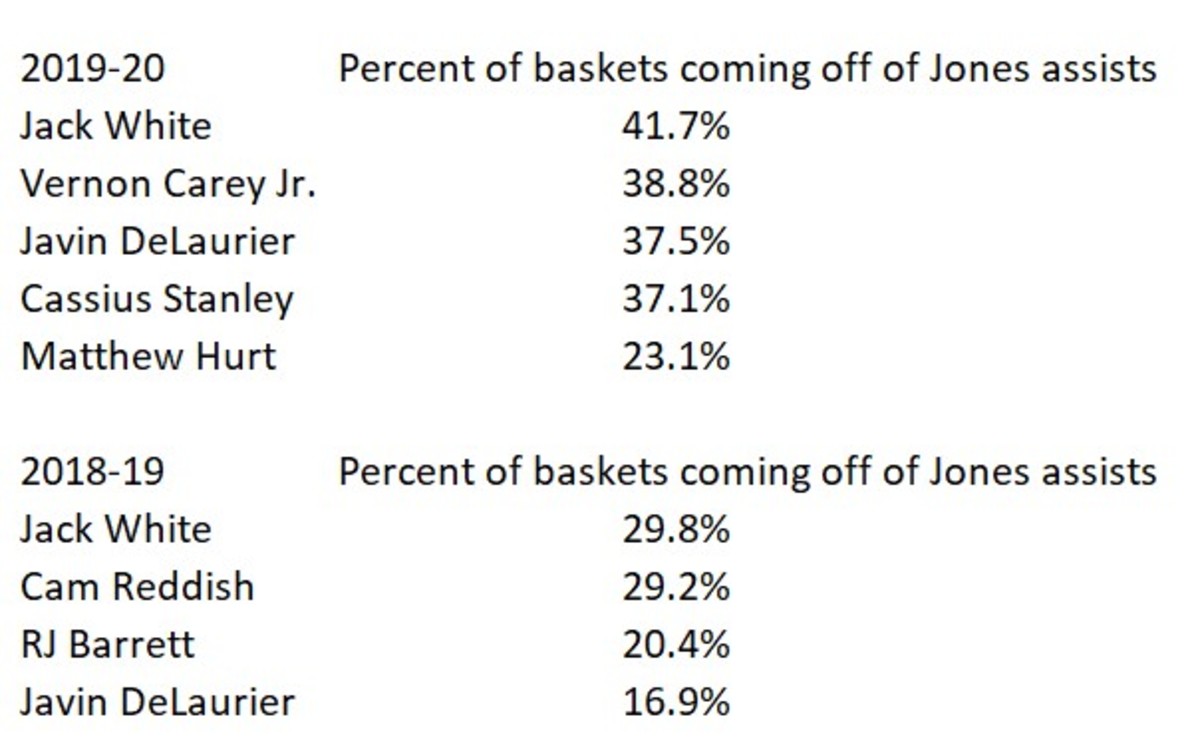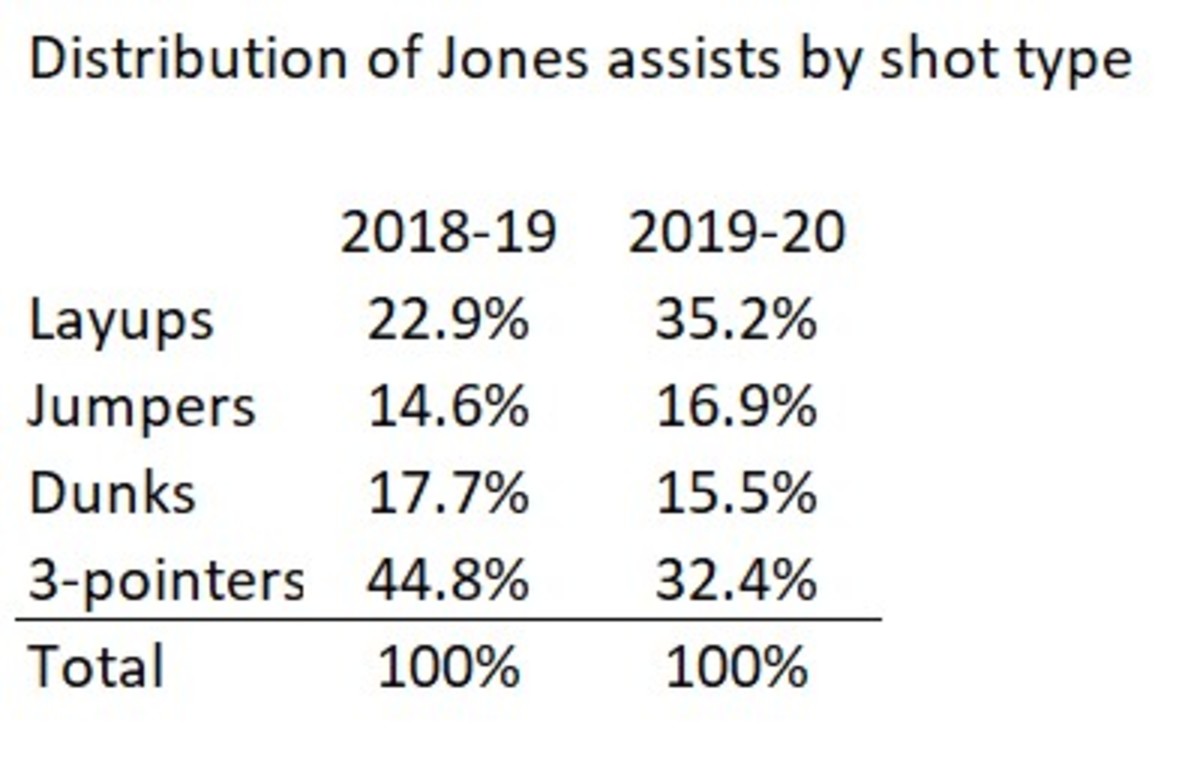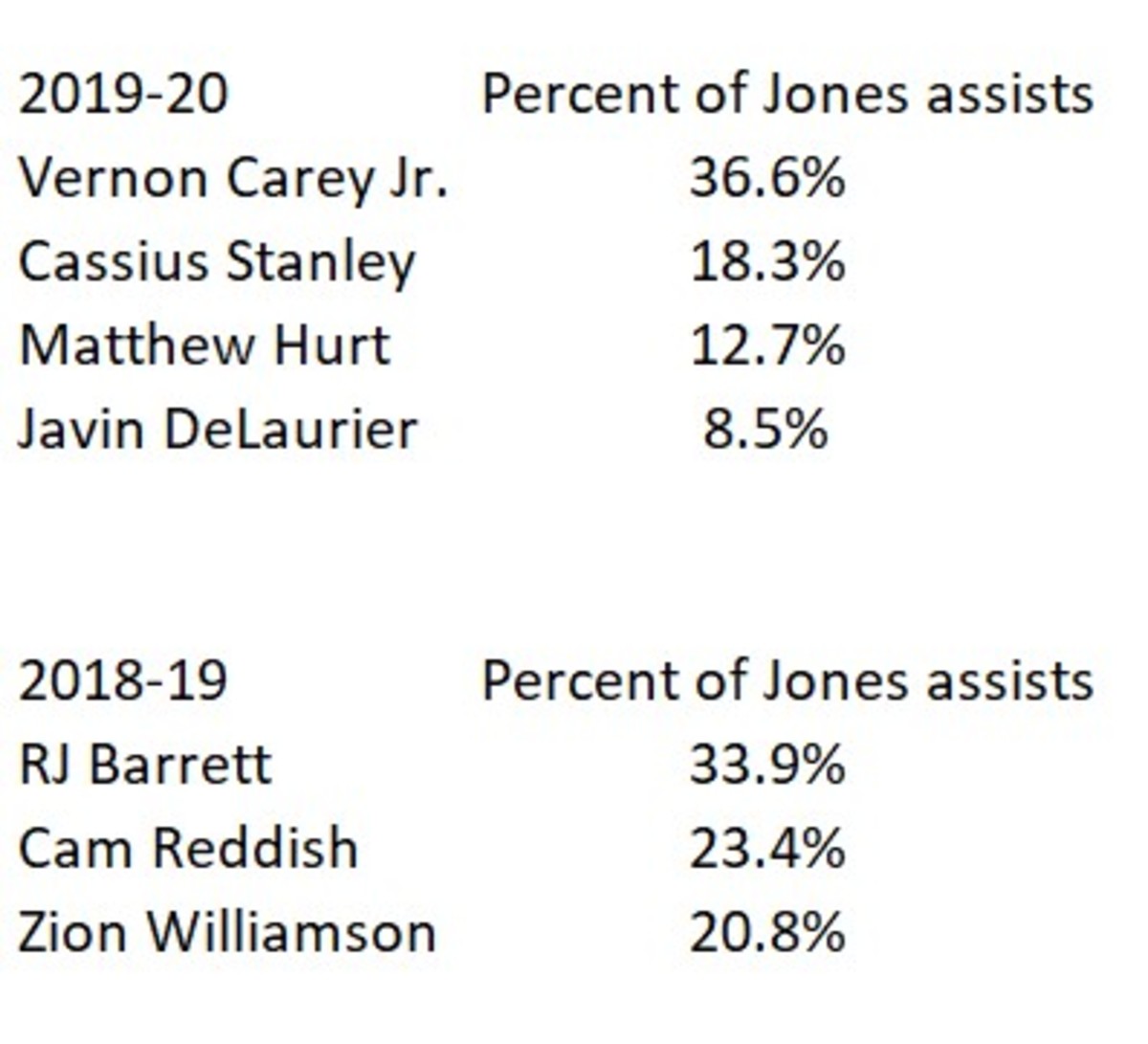A Look At How Tre Jones' Passing Has Changed

Tre Jones returned to Duke despite a situation that looked, to a point guard, like recipe for disaster.
Jones was returning to a team that lost two of the best finishers in recent college basketball history in Zion Williamson and RJ Barrett. For a player whose future NBA career depends on his ability to set up teammates for scores, it seemed like a drop in his assists was inevitable.
Prior to the season, however, coach Mike Krzyzewski said that he though the conventional wisdom was wrong. While Barrett and Williamson were great at finishing, they were also elite when it came to creating their own shots. Neither needed a pass from Jones to set them up. They preferred to get the ball and get to work.
Based on that, and with a roster of freshmen who weren’t quite as NBA ready as the ones leaving for the draft, Krzyzewski said he expected Jones’ assist numbers to go up.
So far, he’s been correct. Jones is averaging 7.1 assists per game, compared to 5.3 last year. Per 40 minutes, the average is 8.2, up from 6.2. Per 100 possessions, Jones is at 11.2 assists, up from 8.5.
So how has Jones’ role in setting up teammates changed?
For one thing, as Krzyzewski predicted, he’s needed more than last year, since this year’s freshmen aren’t as good as creating their own shots. Throwing out his own made shots, Jones has assisted on 28.7 percent of Duke’s baskets this year, up from 18.7 percent last season.
Last year, Jack White was most dependent on being set up by Jones. 29.8% of his made shots came off of Jones assists, which led the team.

This year, four players, including White, have a higher percentage than that coming from Jones passes.
Based on the players at the top of last year’s list—White, Reddish, Barrett—you might think that Jones spent more time last season driving and kicking out for threes. You’d be correct. Here’s a look at how the distribution of Jones’ assists have changed.

Jones is passing for far fewer threes, with the difference being made up by layups.
This season. 60.7 percent of Jones’ assists have been on shots in the paint, up from 50 percent last season. That’s largely due to Carey, who has been the recipient of more than one third of Jones’ assists this year.

While Carey is getting a higher percentage than anyone last season, the numbers also show that Jones is more democratic this year, spreading his passes around without last season’s big three around.
So, while it’s still early, it appears that Coach K might know a thing or two about his players, despite what the conventional wisdom says.
